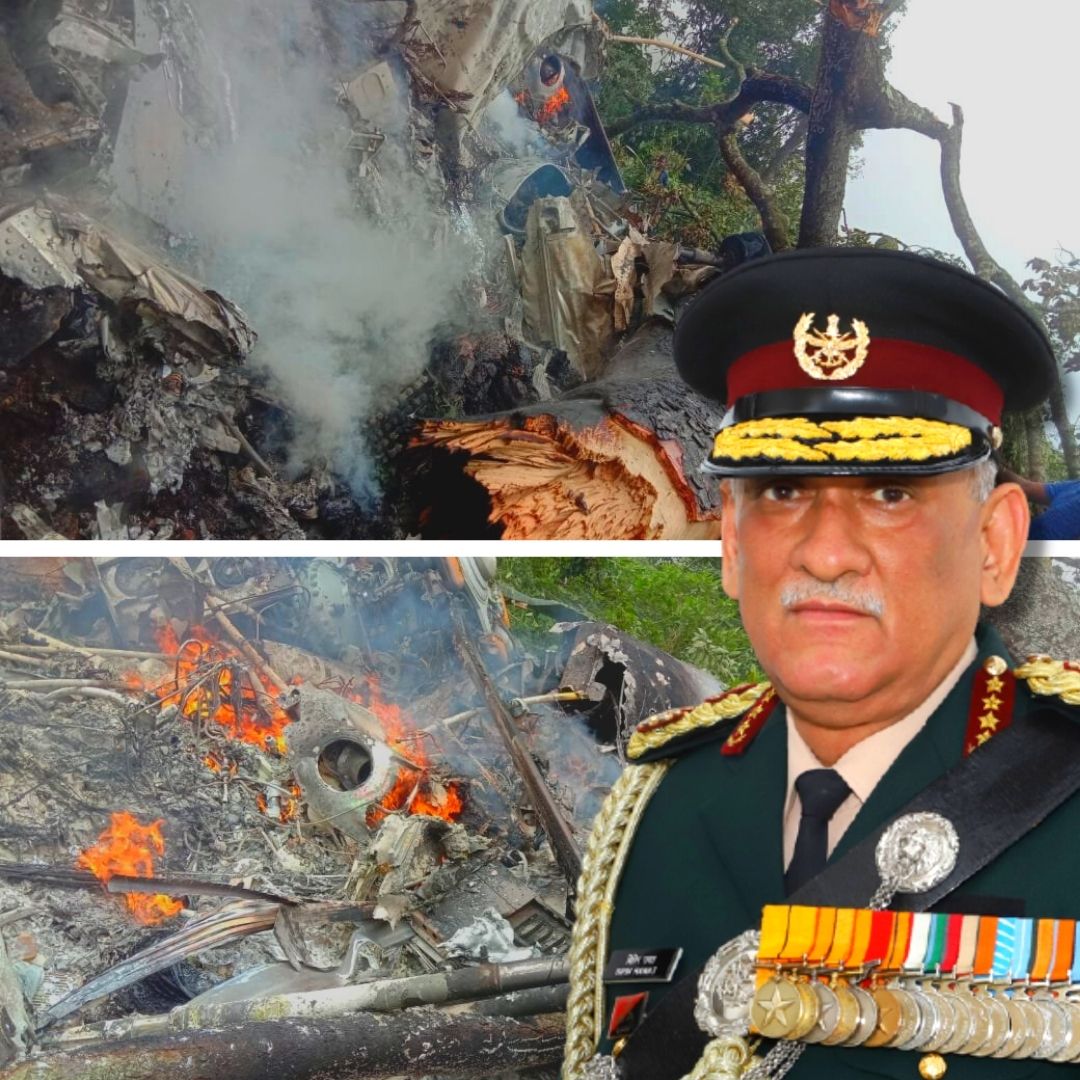Mi-17V-5 Military Transport Helicopter- Army Chopper Carrying CDS Bipin Rawat, Family That Crashed In Tamil Nadu
Writer: Shweta Singh
She is a Journalism graduate from Delhi University, She has previously worked as a voice over artist for various cuisines and clothing brands. She is specialised in content writing, hosting anchoring and voice over.
India, 8 Dec 2021 12:20 PM GMT
Editor : Snehadri Sarkar |
While he is a massive sports fanatic, his interest also lies in mainstream news and nitpicking trending and less talked about everyday issues.
Creatives : Snehadri Sarkar
While he is a massive sports fanatic, his interest also lies in mainstream news and nitpicking trending and less talked about everyday issues.
A total of 14 people were reportedly on board the military chopper at the time of its crash, including Madhulika Rawat, Brig LS Lidder, NK Jitendra Kr, L/Naik Vivek Kumar, L/Naik B Sai Teja, Lt Col Harjinder Singh, NK Gursewak Singh, Hav Satpal, and others.
The Indian Air Force (IAF) helicopter Mi-17V-5 that crashed in Tamil Nadu with CDS Bipin Rawat and 13 others is a military transport variant in the Mi-8/17 family of helicopters. It is produced by Kazan Helicopters, a subsidiary of Russian Helicopters. The aircraft is widely touted to be one of the world's most advanced transport helicopters. It is designed to support troop and arms transport, fire support, convoy escort, patrol, and search-and-rescue (SAR) missions.
The Indian Ministry of Defence (MoD) ordered 12 Mi-17V5 helicopters during the Aero India show, held back in February 2013. The aircraft order was placed with Rosoboronexport, a Russian firm, on a contract of $1.3bn signed in 2008.
Indian Aircraft Have Become Flying Coffins
In a report by ORF, a significant chunk of the Indian fleet belongs to Russian made aircraft, which have been the most accident-prone. In 2014, the Russian MiG jet was reported to be the most accident-prone, infamously termed 'flying coffin' 'widow maker'. The pilots of MiG regularly complained of MiG models landing too fast and that the design of the window canopy means they can't see the runway correctly. Following the situation, the India Air Force had gradually retired the older planes dated back to 1960.
The incidents of frequent plane crashes have highlighted the operational inefficiency of defence aircraft. The political interference in aircraft procurement had been a significant hindrance in adopting a power-centric approach taken by most global powers in terms of fast jets.
Some Analytical Analysis
As per data by Republic World, India currently flies the Aerospatiale Alouette III, Antonov An-32 (Cline), BAe Hawk, Beriev A-50, Boeing (Hughes) AH-64 Apache, Boeing 737 (Series), Boeing C-17 Globemaster III, Boeing P-8 Poseidon, Dassault Mirage 2000, Dornier Do 228, HAL Dhruv, HAL HJT-16 Kiran, HAL LCH, HAL Tejas LCA, IAI Searcher, Ilyushin IL-76, Ilyushin IL-78, Kamov Ka-226 Sergei, Lockheed Martin C-130 J Super Hercules, Mikoyan MiG-29 (Fulcrum), Mikoyan Gurevich MiG21, Mil Mi-17 (Hip-H), Mil Mi-26 (Halo), Mil Mi-35 (Hind-E), Mil Mi-8 (Hip), SEPECAT Jaguar, Sukhoi Su-30 (Flanker-C). In addition, the current ambition is to procure another lightweight fighter, most likely the Saab Gripen E/F or Lockheed Martin F-16' Block 70/72', as well as a fifth-generation derivative of Russia's troubled PAK FA/T-50 stealth fighter.
With such a staggering diversity, ranging from extremely old and on their way to retirement to cutting edge and expensive multi-role aircraft, the IAF faces daunting logistics, training standardisation and force design challenges. Moreover, partly due to the expense of supporting and operating so many different aircraft fleets.
Also Read: Amid Rising Voice Against AFSPA, Nagaland Govt Asks Centre To Repeal It
 All section
All section














